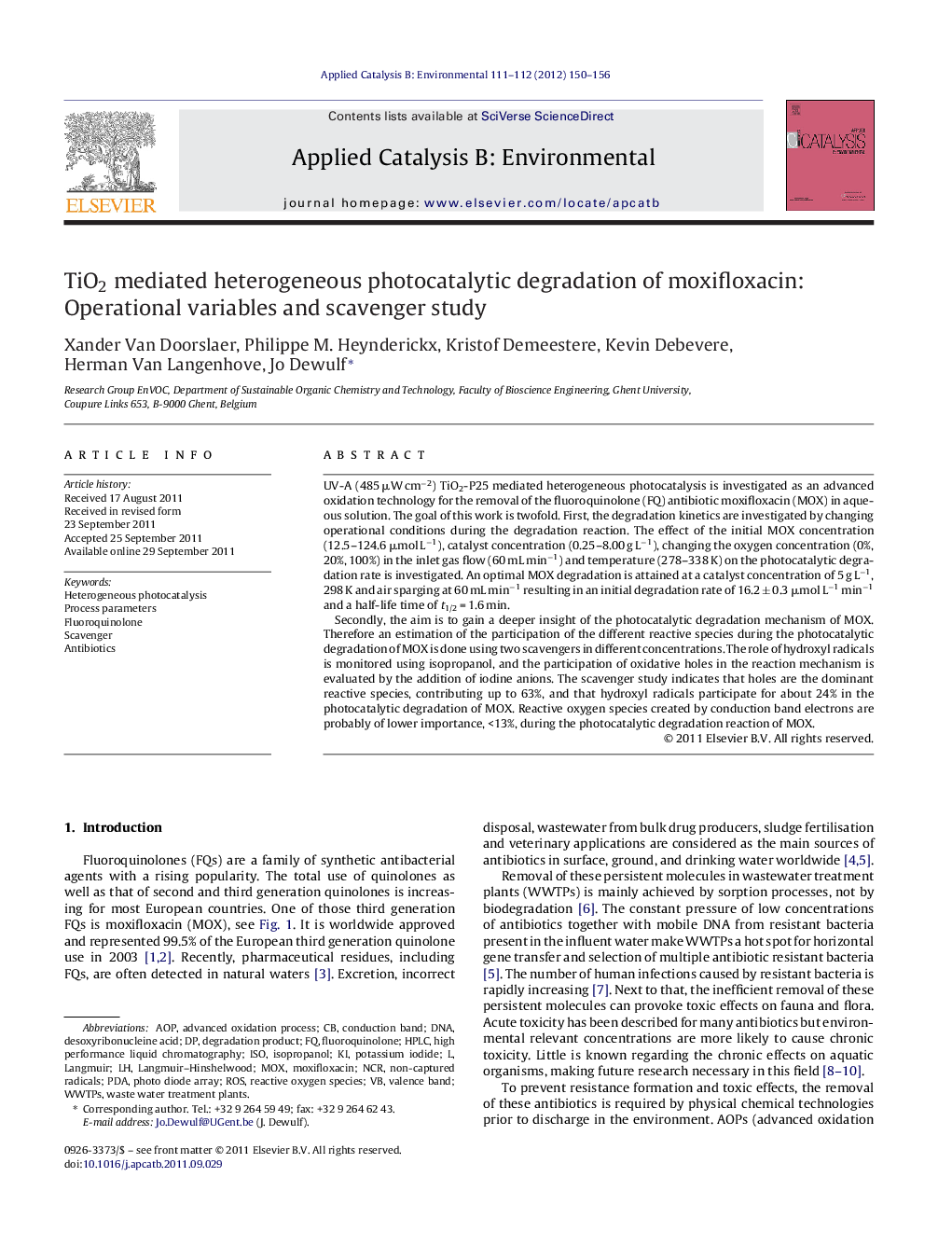| Article ID | Journal | Published Year | Pages | File Type |
|---|---|---|---|---|
| 46459 | Applied Catalysis B: Environmental | 2012 | 7 Pages |
UV-A (485 μW cm−2) TiO2-P25 mediated heterogeneous photocatalysis is investigated as an advanced oxidation technology for the removal of the fluoroquinolone (FQ) antibiotic moxifloxacin (MOX) in aqueous solution. The goal of this work is twofold. First, the degradation kinetics are investigated by changing operational conditions during the degradation reaction. The effect of the initial MOX concentration (12.5–124.6 μmol L−1), catalyst concentration (0.25–8.00 g L−1), changing the oxygen concentration (0%, 20%, 100%) in the inlet gas flow (60 mL min−1) and temperature (278–338 K) on the photocatalytic degradation rate is investigated. An optimal MOX degradation is attained at a catalyst concentration of 5 g L−1, 298 K and air sparging at 60 mL min−1 resulting in an initial degradation rate of 16.2 ± 0.3 μmol L−1 min−1 and a half-life time of t1/2 = 1.6 min.Secondly, the aim is to gain a deeper insight of the photocatalytic degradation mechanism of MOX. Therefore an estimation of the participation of the different reactive species during the photocatalytic degradation of MOX is done using two scavengers in different concentrations. The role of hydroxyl radicals is monitored using isopropanol, and the participation of oxidative holes in the reaction mechanism is evaluated by the addition of iodine anions. The scavenger study indicates that holes are the dominant reactive species, contributing up to 63%, and that hydroxyl radicals participate for about 24% in the photocatalytic degradation of MOX. Reactive oxygen species created by conduction band electrons are probably of lower importance, <13%, during the photocatalytic degradation reaction of MOX.
Graphical abstractFigure optionsDownload full-size imageDownload as PowerPoint slideHighlights► Different operational variables are studied for the photocatalytic degradation of MOX. ► A new approach in calculating initial degradation rates is applied. ► Relative contributions of reactive species are determined using scavengers.
